
Article contents

The best stock trading apps in the UK are XTB, eToro and Lightyear. They’re all low cost, have a great range of investment options (stocks and ETFs) and awesome customer service. You can also trade CFDs (apart from Lightyear which is better for beginners).
Looking to start trading stocks and shares, or already a pro and looking to trade on your mobile? Here’s the best stock trading apps in the UK.
XTB tops the list – it’s low cost, has a huge range of investment options and a great website and app.
Get 6.5%* AER on uninvested cash



XTB offers a pretty epic flexible ISA, where you can save and invest tax-free, with the ability to withdraw cash, and then re-add to your ISA within the same tax year, without affecting your ISA allowance (your £20,000 annual tax-free limit).
XTB is an awesome investment platform, with a huge range of investment options, with over 3,000 stocks from across the world and over 1,350 ETFs.
It’s very low cost overall – the ISA is free, and there’s 0% commission on investment volume up to €100,000 per month (0.20% after that).
Plus, for a limited time you can get 6.5%* AER on uninvested cash.

The platform itself (the website and mobile app) is one of the best out there too. It’s easy to use, fast and packed with trading tools to help you invest.
And, the customer service is excellent.
• Flexible ISA
• Low trading fees
• Awesome trading software
• Good range of investment options
• Offers CFD trading (alongside regular investing)
• Available on desktop, tablet and mobile
• Personal account manager and 24/5 support
• Demo account
• £1 minimum investment
• No pension
XTB tops the list – it’s low cost, has a huge range of investment options and a great website and app.
XTB tops the list – it’s low cost, has a huge range of investment options and a great website and app.



eToro is one of the best investment platforms out there - and is by far the most popular, with over 30 million customers.
Why? eToro is very low cost (commission-free stocks), easy to use, and has lots of awesome trading features. There's also a community of other traders to learn from and even copy.
It’s also got the largest range of assets to trade and invest in – including stocks, ETFs, crypto, CFDs, currencies and commodities (such as gold).

XTB tops the list – it’s low cost, has a huge range of investment options and a great website and app.
Deposit £50, get 10 free trades



Lightyear is an awesome mobile app with very low cost investing.
There’s a decent range of investment options (over 4,000 stocks and ETFs), you can store multiple currencies, and the app itself is modern and super slick.
ETFs are commission-free, and stocks are max. £1/$1/€1 per order. There's also very low currency conversion fees of 0.35%, or you can hold the currency itself and avoid this fee.
You can invest with a tax-free ISA, a regular account and a business account.
And if you’ve got cash savings, you’ll also get one of the best rates possible with their Cash ISA (it matches the Bank of England base rate).

Get £100 - £3,000 cashback



interactive investor (or simply ii) is a very well-established investment platform with 30 years of helping people make their money do more. They’ve successfully kept with the times, and are still a leading platform today.
ii has one of the widest ranges of investment options out there, and the platform itself (whether you’re on the website or the app) is easy to use, suited to both beginners and experienced investors.
It’s low cost overall, and fairly unique in that it charges a flat monthly fee depending on which account you’d like (e.g. an ISA for tax-free investing, or a pension to save for retirement), rather than a percentage of your investments.

ii offers a range of account types to suit your financial goals, including an ISA (which can be self-managed or managed by their experts for the same fee), a Trading Account, and a three-time Which? Recommended Personal Pension (SIPP).
Their plans start from £4.99 a month, with a range of unique benefits as you move to higher-priced plans (such as free accounts for your friends and family). There’s also useful analytical tools, which are embedded in the platform, and are great for in-depth insight into the markets, helping to make smarter investment decisions.
Trades typically cost from £3.99 per investment (buying or selling), although regular investing monthly is free. Other fees apply too, depending on what you’re investing in.
If you’ve got a larger portfolio, ii’s flat fee makes investing very low cost. And if you’re just starting out, it’s still low cost overall, but the monthly fee will be a higher proportion of your investments while you’re building up your portfolio.
The UK-based customer service team is excellent and award-winning, with both online and phone available (which is very rare these days).
Overall, we think ii is great, and definitely worth checking out to see if it’s right for you.
Best for: experienced investors with a growing portfolio (benefit from the flat fee)
Nuts About Money rating: 5 stars
Fees: low
Minimum deposit: £25
We’ve reviewed and rated all the best stock trading apps and stock brokers in the UK. Here’s the criteria we’ve used to determine the best:
That covers pretty much everything you’d want in a stock trading app.
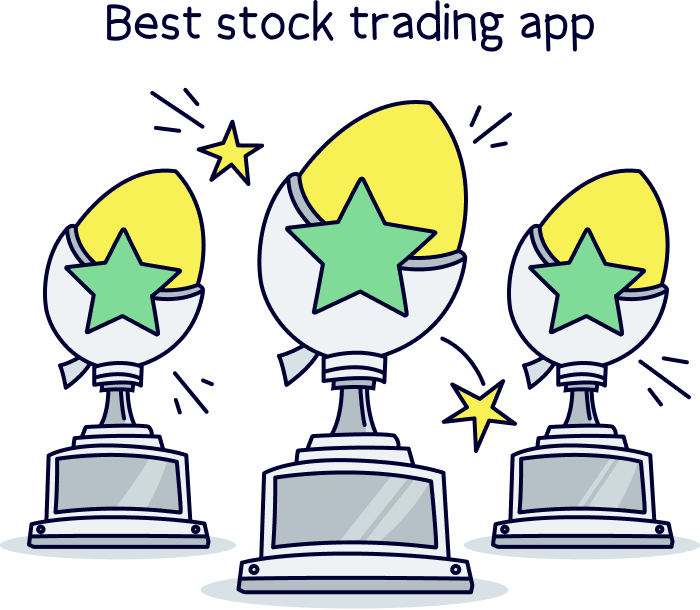
The mobile apps above are the ones we believe are the best, and recommend to our own friends and family. So you can be confident that whichever app you pick, you’ll be using one of the best out there.
You also have the option of trying them all, and see which one you like best, they’re all free to sign up! Although don’t sign up to a Stocks & Shares ISA until you are ready to commit to one, as you can only have one per year (more on ISAs below).
Stock trading can feel a bit daunting if you’re a beginner, and there’s a lot to learn. But don’t let that put you off, the benefits to your financial life could be immense!
With that in mind, we recommend beginners to start with eToro¹. It’s the most user-friendly, and very welcoming to beginners. It's easy to use, and of course, it’s low cost!
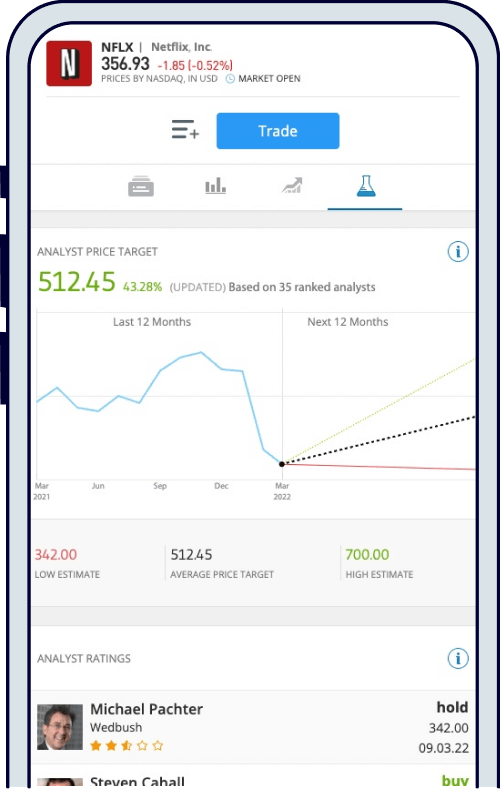
There’s also lots of resources to learn more about stock trading and develop your skills and knowledge about investing.
Not a fan of paying fees? Neither are we! That’s why we’ve put the commission fee stock trading apps top of our stock trading app list – they're all great trading platforms, and low cost overall too (more on fees later).
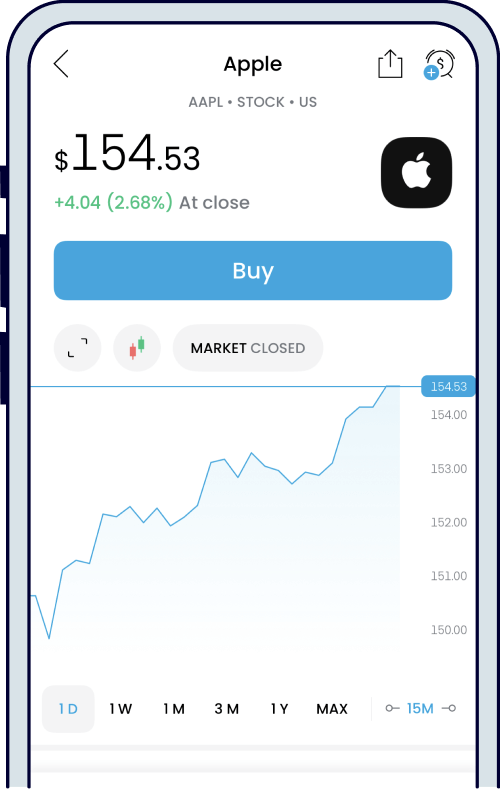
When we refer to stock trading, we mean buying and selling investments, such as shares of companies that are listed on stock exchanges (also often called simply the stock market).
Shares are where you own a tiny part of a company, so a share of a company. And a stock exchange is simply a place to buy and sell shares – which you would do through a stock broker (a trading app in this case).
There’s a stock exchange (and sometimes a few) in most countries across the world, such as in the UK, where we have the London Stock Exchange (LSE), and in America, where they have the New York Stock Exchange (plus others).
On an exchange you can trade the shares of companies that have decided to and been allowed to sell their shares to the public. They are a ‘publicly listed company’ (listed on a stock exchange for the public to buy). These are often large, successful companies, or medium sized companies growing fast. They are not new businesses.
The majority of companies across the world are private companies. This means they are privately owned and not listed on a stock exchange for the public to buy their shares. They have just a few shareholders, or sometimes just one. A Shareholder is the owner of the share, and therefore an owner of the company.
The main reason companies ‘go public’, and list on a stock exchange, is to raise money from the public as investors, and secondly to allow existing shareholders to sell their shares and realise some of the value they have as a shareholder (i.e. get some cash for all the hard work growing the business). Although of course, they are giving up some of their ownership in order to do this.
Let’s dive into what type of investments you can actually buy on stock trading apps.
As we mentioned above, it’s a share of the ownership of a company. If you own one share, you own a bit of the company.
Each company can have as many shares as they like, so one share may not represent that much, or it could represent the whole company (if it’s a private company).
ETFs, or exchange-traded funds, are groups of shares combined into one single investment. They’re pretty great, and super popular.
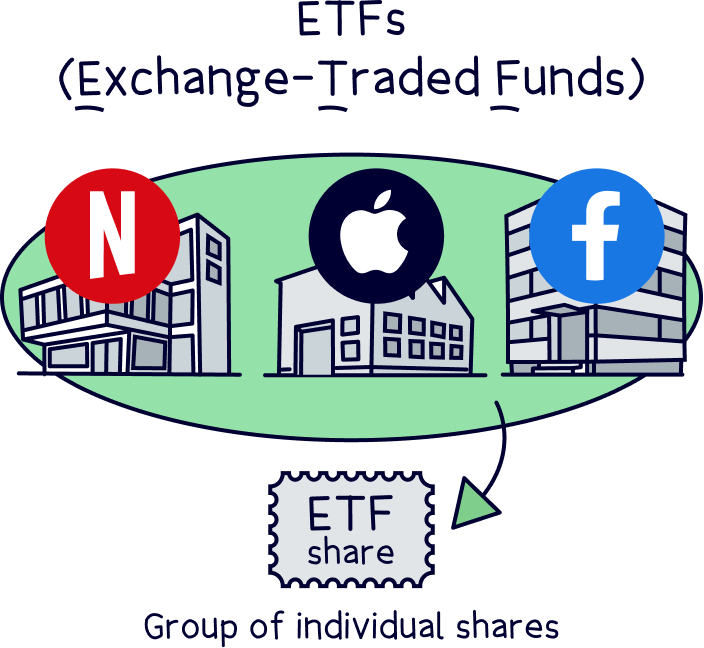
Buying an ETF means you don’t have to go and buy all the shares from individual companies in order to put together a portfolio of investments (that’s your total investments you have).
It’s typically seen as safer to buy a range of investments, rather than shares in just a few companies, and so ETFs give you that ability, in a super easy way.
ETFs can represent whole stock exchanges, such as the London Stock Exchange, represented by the FTSE, or FTSE 100, which is the top 100 companies in the UK. This is super popular as it represents the whole UK economy effectively.
When you buy a share of an ETF that represents the FTSE 100, you are effectively buying a share of the top 100 companies in the UK. Pretty cool right? Saves you a lot of time and money vs buying all the companies directly.
ETFs can also represent themes, such as industries, and these are sometimes called thematic funds. For instance, you can buy an ETF that has shares of companies in the electric vehicle industry, or the AI industry, or green energy. There’s quite literally thousands!
Here’s where things get exciting! Alongside a standard investing account called a General Invest Account, or within a CFD account (more on those later), you can open and invest within a Stocks and Shares ISA.
A Stocks & Shares ISA (Individual Savings Account), is where everything you save and invest is completely tax-free! So, you won’t pay any Capital Gains Tax, Income Tax or Dividend Tax. Pretty great right?
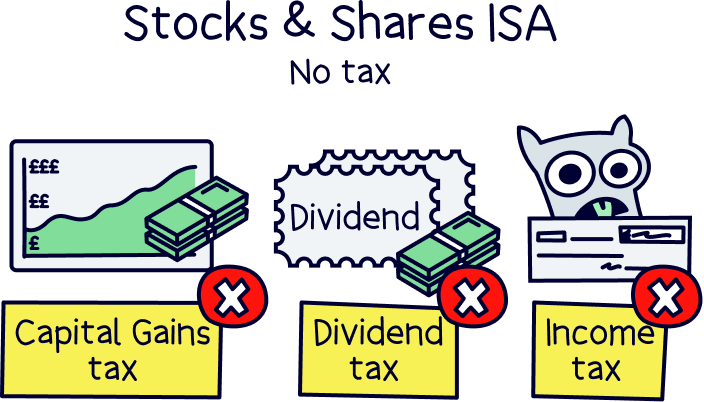
You can also save up to £20,000 per tax year (in total across all of your ISAs, so a Cash ISA and Lifetime ISA if you have them). A tax year runs from April 6th to April 5th the following year.
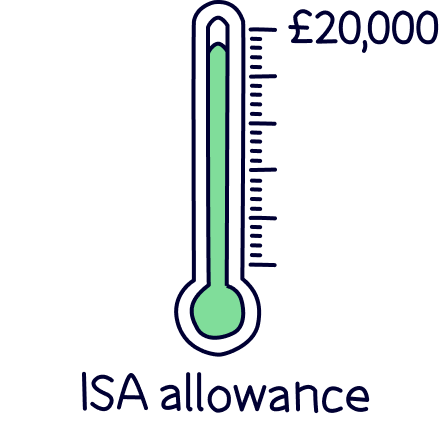
The only drawback is you can only pay into one each tax year, so you have to choose wisely!
A common strategy is to use your Stocks and Shares ISA with an expert-managed investment platform. That’s where the experts handle everything and grow your money over the long-term. And then use a GIA (General Investment Account) for your own trading and investing. If you’re interested, here’s the best expert-managed Stocks & Shares ISAs.
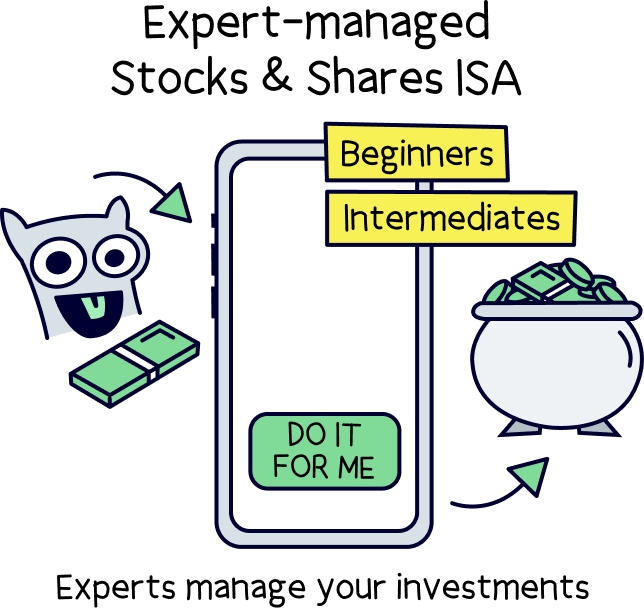
We mentioned CFDs, but what are they? CFDs stand for ‘Contract For Differences’. It sounds really complicated, but it’s really quite simple.
Trading CFDs are very common when day trading and with more experienced traders.
Instead of purchasing an asset, such as a stock or share, you enter into an agreement with the broker or trading platform (a contract), about the price of the asset, and agree to pay the difference between when you bought the CFD and when you sell it (you settle the difference).
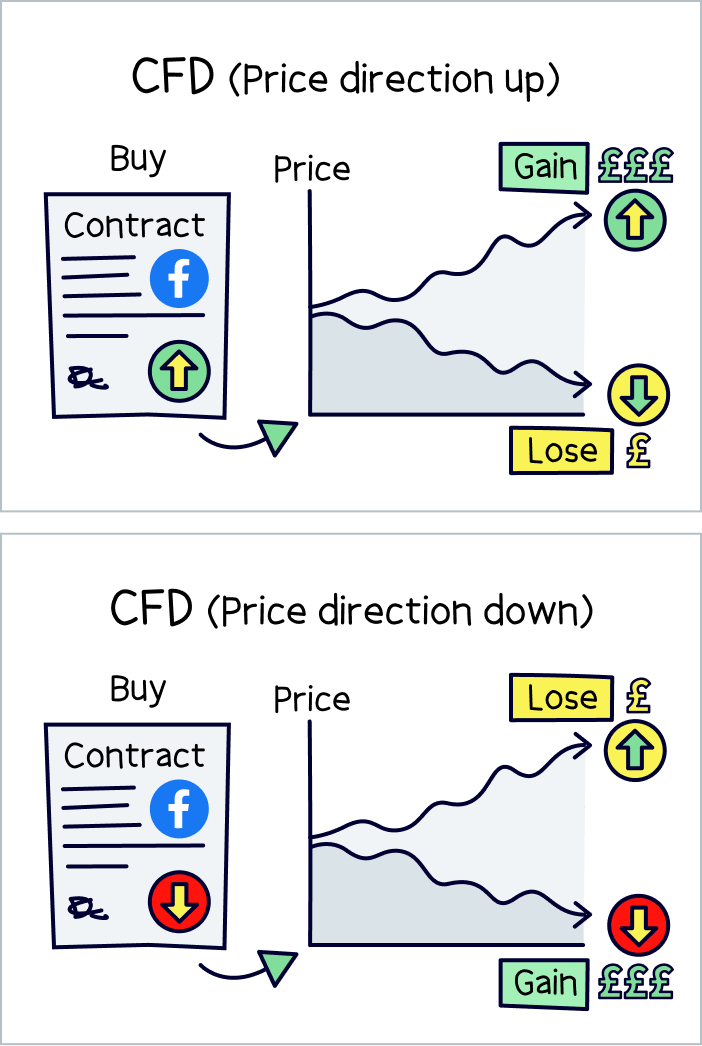
So if you buy a CFD for a stock that’s worth £100, and the stock price increases to £110, and you sell the CFD, you have made £10 profit. Just as you would have if you bought the stock itself.
However, with CFDs, you can also trade the price going down, called going short. So if you had bought a contract for the price going down, and the same stock was now worth £90 instead of £100, you would have also made a profit of £10. Pretty cool right?
And that’s not all. You can actually trade with more money than you actually have. You can effectively borrow money from the broker or platform itself. This is called leverage trading or margin trading.
It works by using your money as a deposit (collateral), to borrow more funds. Let’s say you want to invest £50 in a share that you think will go up in price. You could borrow 5x that amount, so make a £250 trade, with just £50 deposit.
If the price of the share increased by 10%, you’d make 10% of £250, which is £25. A lot more, than 10% of £50 (£5), if you had just bought the stock. Seems good right?
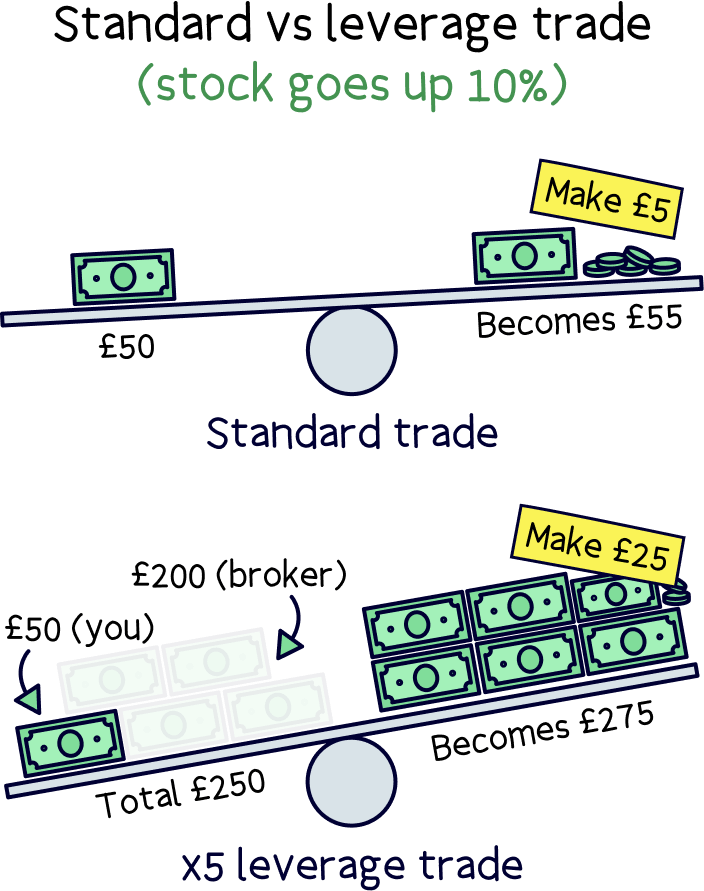
However, you have to be careful, as although it magnifies your profit, it also magnifies your losses. So if the stock went down 10% instead, you would now have lost 10% of £250, which is £25. That’s 50% of your £50 deposit. Not great.
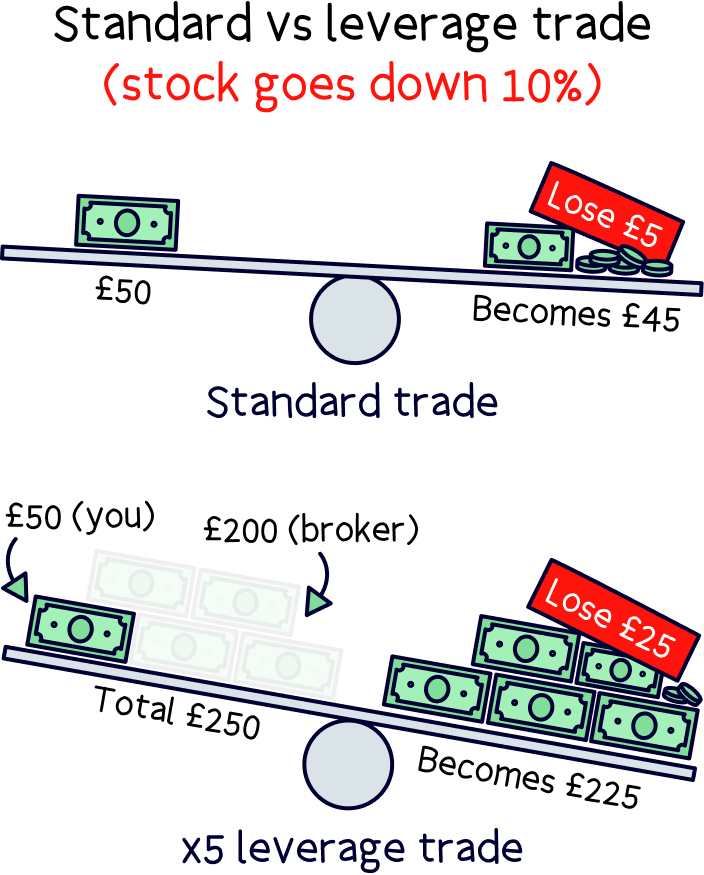
Leverage trading is useful, but please be sensible!
If you are interested in CFDs check out the best CFD trading platforms in the UK.
With public companies, they often have a lot of shares. For instance, Apple has 16 billion shares. Yep, 16 billion! The amount of shares a company has is technically called ‘shares outstanding’.
This can change over time as companies can issue new shares, or they can buy shares back.
If they issue new shares, this reduces the value of the current shares, and if they buy them back, they are often then removed from circulation (effectively destroyed), and the value of all the remaining shares increase.
The market capitalisation is about understanding how much a company is worth in relation to its share price (which is just one way of valuing a business). It is the total amount of all the shares (called the outstanding shares), added together.
So if a company has 1 million outstanding shares, and each share is £1, then it has a ‘market cap’ of £1,000,000.
Using the market cap, you can categorise a company by its size, with ‘large cap’ companies valued at over £10 billion, ‘mid cap’, or ‘medium cap’ companies between £2 billion and £10 billion, ‘small cap’ companies between £300 million and £2 billion, and ‘micro cap’ between £50 million and £300 million.
Large businesses, with bigger market caps, are seen as safer investments as they’re typically more established businesses with large revenue (how much money they make from sales) that is nearly guaranteed every year. However this is not always the case, share prices can get a bit crazy at times! It’s always best to think about the long-term.
The earnings per share (EPS), is a measure for investors to quickly determine how profitable a company is. It’s simply the net profit (how much a company makes after all the costs) of a company divided by the total number of shares (called outstanding shares).
For instance, if there are 1,000,000 outstanding shares, and the net profit is £10,000,000, then the earnings per share is £10. It’s £10 in earnings (profit), per share.
If you are comparing companies, then the higher the earnings per share, the more profitable the company is. You could also compare this for the same company over time too, to see how it has been performing.
Dividends are when a company decides to give its profits back to its shareholders (the owners of the company). It’s simply a cash payment to whoever holds the shares. Your stock broker or trading app (providing you are actually holding the shares and not CFDs), will collect this for you, and it will automatically appear in your account.
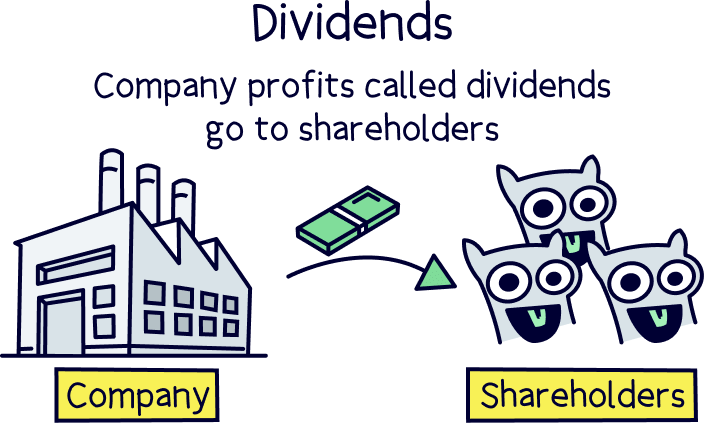
These are often made from more established, and of course, very profitable companies, and often paid yearly or quarterly (every 3 months).
In the UK, you’ll pay a Dividend Tax on any dividends you receive. Although only if they are higher than your £500 tax-free allowance. You’ll pay a tax rate depending on your Income Tax band. (Income Tax is what you’ll pay on your salary, we cover the tax bands just below.)
Here’s what you’ll pay:
If you’re not sure what tax band you’re in, use the table below to work out which band you’ll be in based on your total income (e.g. your salary):
However you won’t pay any Dividend Tax at all if your investments are within a Stocks and Shares ISA.
You’ll also have to pay Capital Gains Tax if you make a profit on your investments each tax year. A profit counts as when you sell an investment for a higher price than you bought it for, and you would only pay tax on the actual profit.
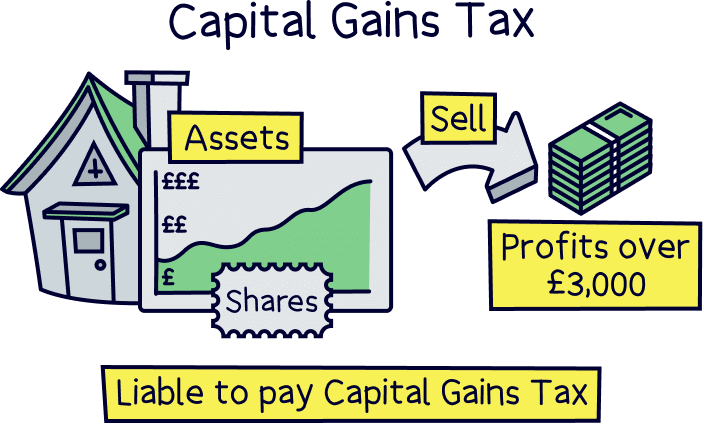
The rate you’ll pay is based on your income too, just like Dividend Tax, so if you’re a basic rate tax-payer, you’ll pay 18% Capital Gains Tax, and if you’re a higher rate, or additional rate tax-payer, you’ll pay 24% tax.
However, if you are investing with a Stocks and Shares ISA, you don’t need to worry about this. Everything is tax-free remember!
Here’s where to learn more about Capital Gains Tax.
Traditionally, you’d have to buy a whole share when you trade stocks, so if one share cost £1,000, you could only buy a share if you were happy to pay £1,000.
This can be a significant portion of your portfolio, and therefore potentially not a sensible investment, also, you might not have £1,000!
With a fractional share, you don’t need to buy a whole share, you can buy a fraction of a share, which is a portion of a share, and you decide how much you want to buy.
Let’s take Netflix for example, it has been as much as $600 per share, which is quite a bit for a lot of investors and traders. Maybe you only want to invest $100 into Netflix.
Well, you can invest that $100, and get ⅙ of a Netflix share back. It’s exactly the same as holding a whole share, the only difference is its a fraction of a share. Pretty cool right?
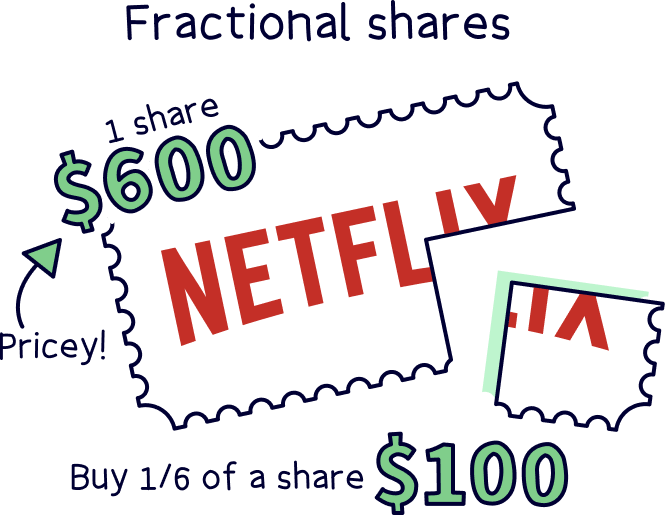
If a share pays out dividends, you’ll also only get the fraction you have of that share as a dividend payment.
Note: you can’t do this with every broker, just some of the more modern ones. (All of our recommended trading apps have this feature.)
When you buy stocks and shares from another country, and so listed on a foreign stock exchange, they’ll be in another currency. Often, this is US stocks, as they’re hugely popular.
However, your account will of course be in Pounds (GBP), normally anyway. So, when you buy a US stock, the trading app (stock broker) will convert your pounds into Dollars (USD) to buy the stock for you.
To do this currency exchange for you, the investment app will charge a fee, the currency conversion fee. This can range from 0.15% (with Trading 212), to 1.5% with other platforms, such as Interactive Investor.
You’ll also pay this fee when you sell and convert the foreign currency back to Pounds.
When you buy shares in the UK, listed on the London Stock Exchange (LSE), you’ll have to pay Stamp Duty Reserve Tax (SDRT).
This is 0.50% of the price of the stock. It’s all handled for you by the stock broker, you don’t actually need to do anything.
You also don’t pay this on ETFs (exchange-traded funds), or IPOs (Initial Public Offerings), which is where new shares for a company are issued. Or on companies listed on the AIM market (which is the stock exchange for smaller companies).
This only applies to UK shares. US and European shares are Stamp Duty free!
By the way, some trading apps are nice and pay this for you. And you won't pay this when trading CFDs, just when you are buying the stock itself. For more information check out the best CFD trading platforms.
In the UK, there’s a huge benefit when it comes to pensions, everything you save within a pension is tax-free in terms of your money growing, so there’s no Capital Gains Tax, Income Tax or Dividend Tax.
Plus, everything you put into a pension is tax-free, which is why if you are employed, your employer will pay money into your pension before it is taxed.
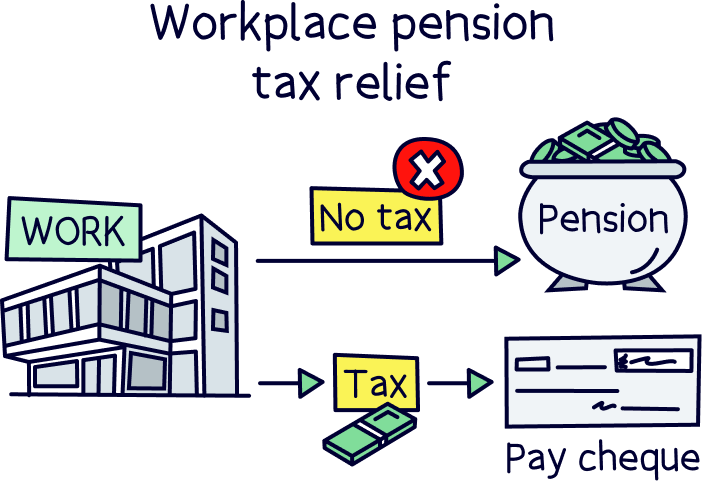
When you manage your own pension, called a Self-Invested Personal Pension (SIPP), you get the same benefits too. However, you can only add money into it after you’ve paid tax on your income, so the government will automatically give you a refund of your tax paid straight back into your pension. Pretty great right? This is often called a government bonus.
That means when you add money into your self-invested personal pension, the government will add 25% straight into your pension all for free. And if you are a higher rate or additional rate tax-payer it gets even better, you can claim the tax back at those rates too (40% and 45%). You do this on a Self-Assessment tax return (it’s easy and all online).
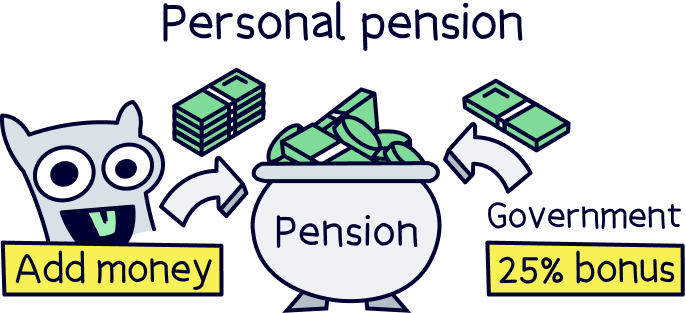
Note: you can only save and invest either as much as your total income (e.g. salary), or £60,000, whichever is lower. This is across all of your pensions.
It’s often a good idea to let the experts manage your personal pension, as they’ll grow it over the long-term in a safe and responsible way. (You can also open your own one to trade in too). You can find the best expert-managed and self-investment personal pensions with our best pension providers.
Yep. It’s perfectly safe to use a stock trading app in the UK.
Stock trading apps, and the companies behind them, need to be reviewed and approved by the Financial Conduct Authority (FCA). They’re the people who make sure financial services companies are looking after you and your money.
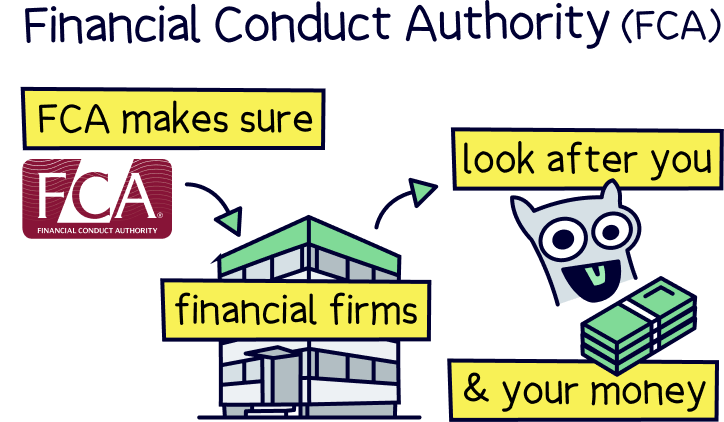
You can check if a trading app is authorised by the FCA by checking the FCA register.
That also means you are protected by the Financial Services Compensation Scheme (FSCS). This is where you could get up to £85,000 compensation if the trading app were to go out of business and was holding your money.
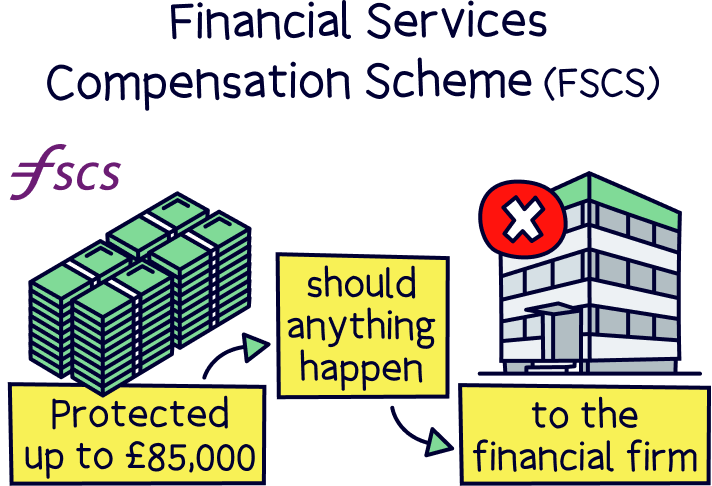
However, typically, your money is actually within the investments themselves, and these are often held by large financial companies and large banks, who hold them in your name, and can only be returned to you.
Note: this doesn’t mean you can’t lose money when stock trading – investments can go up and down in value, and typically with short term trading there can be big changes over a short period of time.
Thanks to the great technology out there these days, you can trade stocks and shares all on your phone! Pretty awesome right. And it can be commission free too!
Investing and trading apps are one of the cheapest ways to invest, they often don’t have any account fees or fees to make trades, you’ll either pay a monthly fee, or sometimes just a currency conversion fee.
Stock trading apps are a great way to make your own investment decisions and trades, to remind yourself of our recommendations, scroll up or click the best stock trading app, if you are learning click best stock trading app for beginners and if you want to trade tax-free within an ISA click best stock trading apps with an ISA.
Finally, if you want the experts to manage your investments check out our best managed Stocks & Shares ISA article.
We’d love to hear from you, and it will help others too.
XTB tops the list – it’s low cost, has a huge range of investment options and a great website and app.